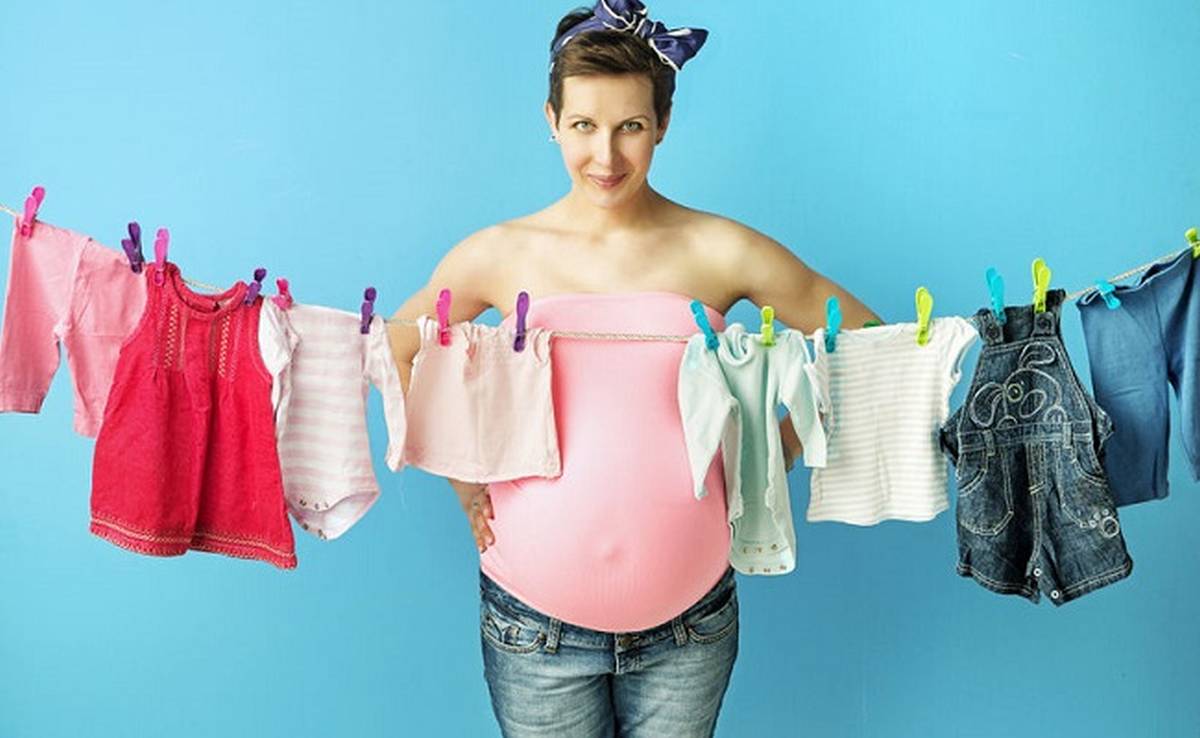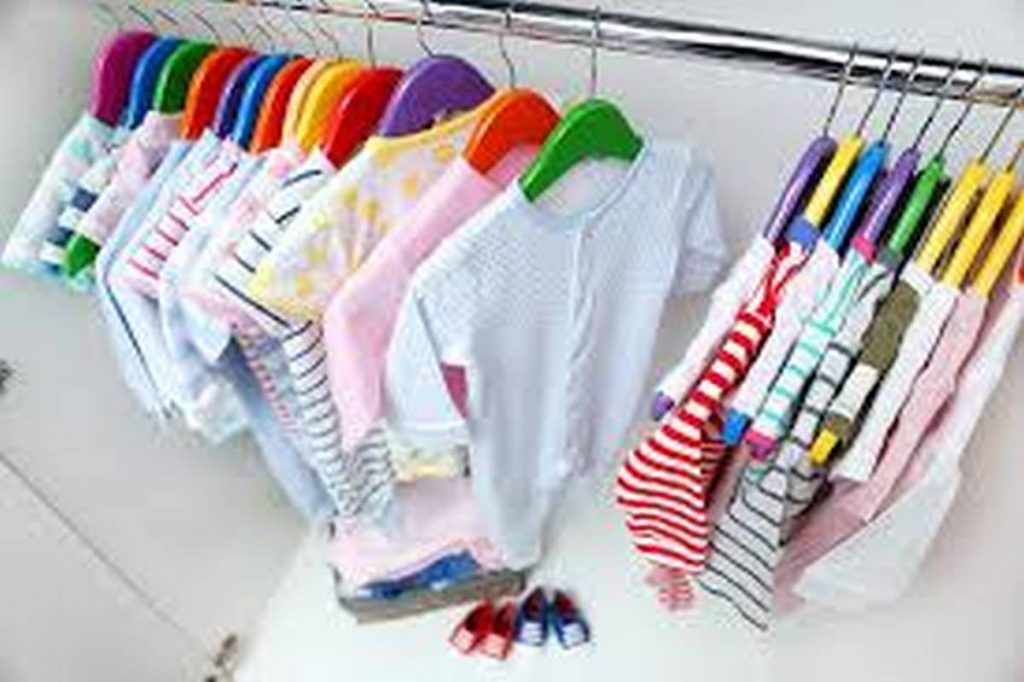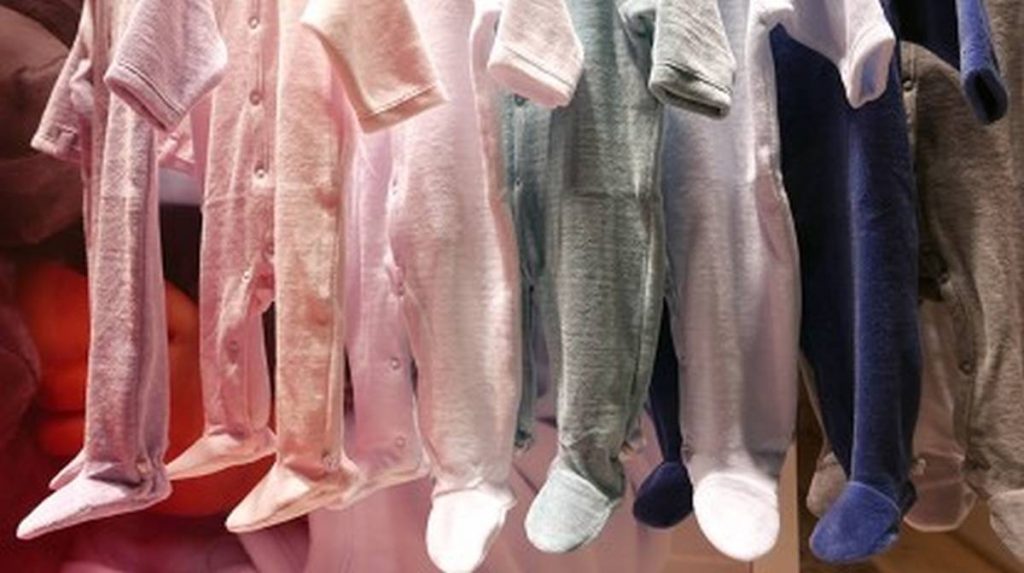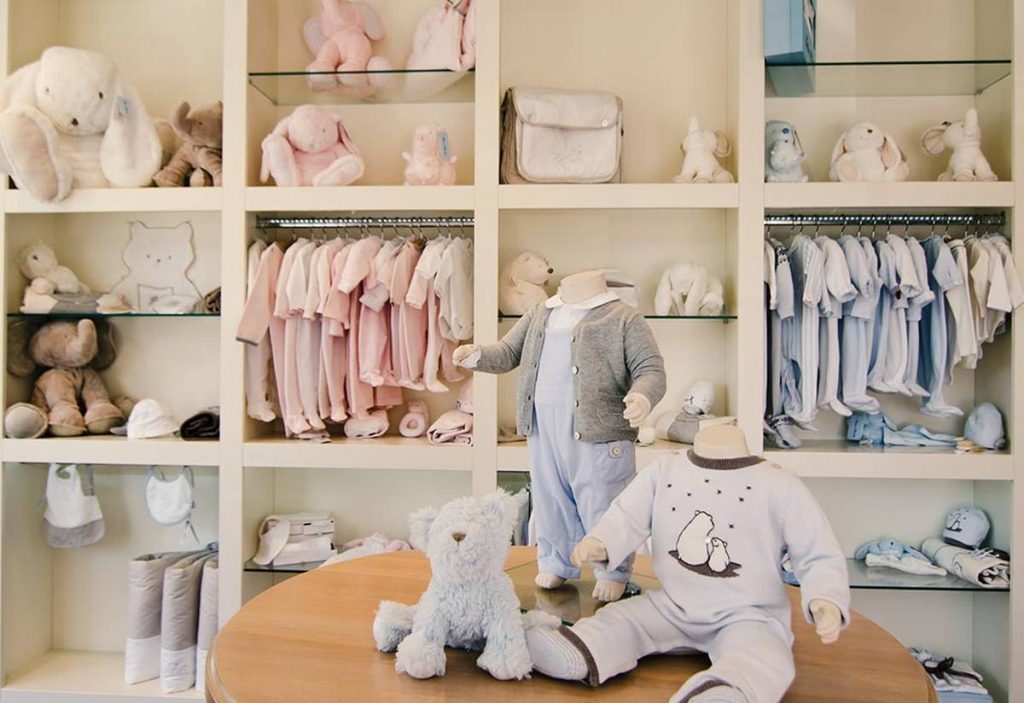While baby clothing sizes are usually rather standard, there are a few things to keep in mind before you go crazy on the essentials. This article explains baby sizing standards so you can shop wisely and be ready for your child's rapid development. Looking for organic baby clothing? Check out our range here.
Tips For Choosing The Correct Baby Clothes Size
One of the most important things to consider when dressing a baby is the baby's clothing size. To help you further, here are some additional suggestions for more discerning and productive decision-making:
- When shopping for a newborn, it's best to stick to the basics. The emphasis here is on quality above quantity. Since infants at this age develop rapidly, you won't need to buy too many new outfits. Also, infants don't tend to soil their clothes. Therefore they last longer. Additionally, if you're shopping for your baby before they're born, you may want to consider purchasing more items that are unisex.
- Try not to go crazy and stock up on too many outfits in advance. That's a common blunder among first-time parents. Some newborns are too big to wear newborn sizes. At this age, hormonal changes are also typical. This means you shouldn't go crazy with your purchases right away.
- When dressing your infant, remember always to keep comfort in mind. For example, avoid buying separates for your baby because they will cause frustration. Instead, you should wear a onesie since they are quite comfortable.
- Remember how the clothing will make you feel as a parent, and steer clear of anything too fiddly or time-consuming.
- Make sure your baby has room to develop by purchasing a size up from their actual age. Saving money in this way on apparel is a bonus.
- Invest in garments that have fewer and easier closures. Avoid using buttons or snaps on your infant's clothing; instead, choose pants or leggings featuring elastic waistbands. They are full of wonder and curiosity at this age, which might lead to mishaps.
- Your baby will be much more at ease and less likely to experience irritation if dressed in cotton. Stretchy fabrics will also continue to fit your kid for longer as they develop.
- It would be best if you chose clothes that will last longer for a toddler. Children of this age are notoriously rough on their clothing due to their increased activity level.
- Pick shoes that will allow you to move freely and comfortably. Bring the infant to the store so you can get the right size.
In addition to saving you time and money, following these basic instructions will get you where you need to go faster. Without making any blunders or having any trouble, dressing your infant can be a wonderful experience. We sincerely wish that this manual has served to assist you iningin avoiding both of those pitfalls.

The Fundamentals: Babies Develop At Their Rate
Clothing for infants is typically categorised into age ranges. Clothes for infants are labelled with the corresponding month (for example, 0-3M), whereas those for toddlers are labelled with the corresponding age range (for example, 2T for two-year-olds). The convention has certain flaws, though. If you ask every parent with more than one child, they will tell you how their child wore clothes that were too big or too small for their age. Perhaps they were still wearing newborn clothes far into their third month, or perhaps by week nine; they were already wearing sizes 3-6M.
So, ensure you're keeping an eye on your baby's growth, especially in size. After the birth of a child, it is best to buy new baby clothes based on the baby's weight and height instead of the baby's chronological age, as indicated by the brand's size chart. Given that each newborn develops at a unique pace, it's best to base sizing decisions on your baby's actual measurements rather than their age.
You probably know that a warm, warm, and content baby is healthy, so selecting the proper fit is crucial. So that the baby is comfortable all day long, choose baby garments, and Onesies® Branded bodysuits that fit snugly but not too tightly, especially around the collar and leg openings. When your bundle of joy starts toddling around, it's crucial to dress them in clothes that won't limit their ability to run, jump, and spin at the playground.
How Much Of Each Size Do I Need When Preparing For A Baby?
Preparing for a new baby is an exciting time, but it can be overwhelming to figure out how to fill the closet. A general estimate of how much each size you use will prevent you from over- or understocking. You can use this as a suggestion for your loved ones, so you don't end up with too many of the same size! Remember that you have no way of knowing how rapidly your baby will develop or how frequently it will require a change in clothes, so it's okay to make educated guesses rather than precise plans.
A newborn goes through a period of fast development. Additionally, she has increased her propensity for making a mess. For the earliest days of your baby's life, stock up on other Onesies® Brand bodysuits & sleepers. If you do laundry once a week, you should stock up on 15 Onesies® Brand bodysuits plus seven sleepers in each size. That's enough for at least two outfits per day and one set of pyjamas per night, all of which can be reused without washing if the baby awakes clean and dry.
You'll need more than just a pair of basic Onesies® Brand bodysuits & pyjamas once your baby starts walking and attending playdates, preschool, and other events. In addition, there will be fewer messes or daily outfit changes as the baby ages, allowing you to start assembling a more diverse collection of clothing. Starting with three new pieces of toddler playwear per week is ideal, but you should buy according to how often your child will be required to dress for family outings and other trips.

Size Chart For Baby Clothes
Now the question is, what size newborn apparel should you buy? Baby clothing sizes are listed here, but remember that every infant develops at their own pace and, like us grownups, comes in various forms and sizes. Also, brand names have significantly different sizing standards for their garments. You like bamboo baby clothes, huh? Explore the options we have here.
Size 00000
Babies born prematurely or who are very little will need this size (about 2kg). There's no need to stock up on size 00000 if you're hoping to make that to 40 weeks or close to it, as it's improbable that a filled baby will need clothes that small. Many well-known brands offer 00000 sizes for infants, so you can browse around if you have a preterm or otherwise small child.
Size 0000
Newborns (about 3 kg) wear this size, but you shouldn't go crazy stocking up on newborn clothes in advance. A baby that weighs more than 4 kilograms at birth can leave you with a huge stack of size 0000 clothing that will likely never be worn. It would be best if you bought a few pieces of clothing in this size but stuck to the essentials (singlets, grows, etc.). Even if your baby weighs around 3 kilograms, it will no longer need 0000s after only a few weeks.
Size 000
Babies up to about three months old (or about 6 kg) typically fit into this size. You will still be changing diapers quite a bit, so stock up on comfy clothes (grow suits are ideal) that zip or button in the front to make diaper changes a breeze.
Size 00
Baby up to roughly six months old (about 8kg). They're likely to stay in this size for longer than most people do. As your baby starts to explore his surroundings by rolling, commando crawling, and crawling, he will likely make a mess of his 00-sized clothing first. Playing with clothes in this size (find inexpensive clothes you don't mind tearing at an op shop) may be an excellent investment.
Size 0
Infants up to about nine months of age can wear size 0 clothing. But, again, they will receive a lot of use as the baby begins crawling, walking, and eating solids, so stocking more is a good idea. Look for clothing that will not impede your baby's movement when they discover crawling and walking. Dresses and skirts can be a hazard for infant girls just learning to crawl, so it's best to stick with legs, long pants, and shorts.
Size 1
Baby boys and girls around 12 months of age can wear size one clothing. Buying clothes has never been more exciting than it is now. Your little girl can finally start wearing dresses and skirts now that she's walking or learning to walk. Also, as they wave goodbye to crawling, you may wave goodbye to the dirty, torn knees of size 0 clothes. Infants of this stage are still clumsy, so stock up on "play clothing" that you don't mind seeing splattered with snot or watermelon juice.
How Do You Measure The Sizes Of Baby Clothes?
You can determine the right size for your infant based on age and weight. However, it's important to remember that infants develop at their rates. In addition, there may be some sizing variations across brands. The basic rule of thumb is not to go crazy and buy an entire wardrobe of size 0000's for your infant. Instead of stocking up on 0000 newborn essentials like grow suits and singlets, put your money toward larger sizes (000 to 1).
How Should Baby Clothes Be Stored?
Clean the garments and deal with the spills. Dry your clothing thoroughly before putting them away. Separate through each size/gender, name your plastic bin, and keep it in a cool, dry area. When retrieved from storage, infant garments may have a yellowed appearance. The yellow stains weren't present when you (or the previous owner) placed them away, and all they need is a night soak, a wash, and some exposure to the sun to look as good as new. Don't throw away your child's newborn pants and shorts just yet; they may grow into them again once they've graduated from diapers. Just one with a bulky diaper on might slip into his favourite shorts again if he is two and wearing underwear.

Purchase Required Baby Clothes
Cotton One-Pieces
You should have a few singlets (or singlet suits) regardless of your size. An infant's chest can be kept warm and protected from the cold with the help of these garments during the winter months. Your kid may wear nothing but these over the summer (unless when out in the sun, of course!).
Growsuits/Onesies
The one piece of clothing that will be used the most by any parent with a newborn. This outfit is adorable, keeps baby warm (without being too hot), and can be quickly placed on and taken off for diaper changes. Sometimes a baby will still "fit" into a grow suit minus the feet, so it's a good idea to stock up on both styles. For older infants just learning to walk, onesie bodysuits without feet can be safer. My Baby Nursery has the biggest range of the best baby clothing. Check it out here.
A Newborn's Essentials Include:
- Set of five singlets (or, ideally, a set of singlet suits, which won't ride up)
- Bodysuits with short sleeves (can be used under clothes in winter)
- although if your baby is born in the summer, you will require at least one or two long-sleeved grow suits.
- In this case, three pairs of socks
Since it's tough to foresee your baby's growth, it's not always practical to stock up on clothes in advance. Some infants experience rapid growth after birth and only look like newborns for a brief period. So do not overinvest at this time. Please remember that there may be some sizing differences between brands and stores.
Conclusion
There are a few things to remember before going crazy on the necessities, even though sizing for baby clothes is very regular. So that you may shop carefully and be prepared for your kid's rapid development, we'll go through baby sizing guidelines in this post. Babies don't all fit into the same clothing size, and some may need a size up immediately. If you're shopping for a toddler, go for durable pieces. When dressing your baby, opt for elastic-waisted pants or leggings rather than those with buttons or snaps.
Cotton clothing will make your infant more comfortable and less likely to develop skin irritations. Age groupings often break down children's clothing, which also applies to infants. Toddler apparel typically has an age recommendation sewn onto the tag. Baby clothes should be purchased after birth according to the child's weight and height rather than their actual age. Having a ballpark figure for each size is important, so you don't end up with too much or too little.
A minimum of 15 Onesies® Brand bodysuits and seven sleepers should be kept on hand if washing clothes once a week. Ideally, starting by buying your child no more than three new pieces of playwear per week would be best. It's possible to end up with a large quantity of size 0000 clothing after having a baby that weighs more than 4 kg at birth. You can choose the correct size based on your baby's age and weight. You will still be doing a lot of diaper changes, so stock up on easy-access front-zipping or buttoning garments.
Now that your girl is walking or learning to walk, she can start wearing dresses and skirts. Short-sleeved bodysuits, singlets, and the like are all part of a newborn's wardrobe staples. Unfortunately, some neonates endure rapid growth and appear brand new for only a short time. The best selection of high-quality baby clothes can be found at My Baby Nursery.
Content Summary
- Even while infant clothes sizes tend to be quite regular, there are still a few things to consider before going crazy on the basics.
- So that you can shop intelligently and be prepared for your kid's rapid development, we will discuss baby sizing standards in this post.
- A baby's clothing size is one of the most crucial factors to consider when getting dressed.
- If you're going shopping for a baby, it's better to get the essentials.
- When preparing for the arrival of your newborn, you may wish to stock up on gender-neutral essentials.
- Don't go wild and buy dozens of new outfits in anticipation of a single event.
- As a result, you shouldn't go crazy with your first round of shopping.
- Keep your baby's comfort in consideration when clothing them.
- You should dress in a onesie because they are very cosy.
- A baby should always be dressed in a size larger than their actual age to allow for growth.
- You can save money on clothing by doing this is a nice perk.
- Get yourself some clothes with simple, few closures.
- When dressing your baby, opt for elastic-waisted pants or leggings rather than those with buttons or snaps.
- Cotton clothing will make your infant more comfortable and less likely to develop skin irritations.
- Pick out durable items that can grow with the child.
- Choose a pair of footwear that won't restrict your motion.
- Avoid buying the wrong size without bringing the baby to the store.
- Dressing your baby can be a fantastic experience if you don't make any mistakes or problems.
- It's possible they wore newborn garments well into their third month or may have already outgrown them by week nine. So, keep an eye on your baby's development, particularly its size.
- A baby's weight and height, rather than the baby's chronological age, should be used to determine the proper size of new baby garments after delivery.
- Since every infant grows at their own pace, you should use the baby's actual measurements, not the baby's age, to determine what size to buy.
- If you have a rough idea of how much of each size you go through, you can avoid over- or understocking.
- Remember that you have no idea how quickly your baby will develop or how often it will need a change of clothes, so it's fine to make educated guesses rather than specific preparations.
- Once your baby starts walking and going to playdates, preschool, and other events, you'll need more than just a few basic Onesies® Brand bodysuits and pyjamas.
- Size 0000 This size is appropriate for newborns (about 3 kg), but you shouldn't go wild buying baby garments ahead of time.
- Size 0 clothing is appropriate for infants up to roughly nine months of age.
- It's important to dress your kid in clothes that won't get in the way once they start crawling and walking.
- In a nutshell, the baby's age and weight will help you determine the correct size.
- Sort items by size and gender into separate containers, label them and store them in a dry, cool place.
- Baby clothes that have been in storage for a long time may have become yellow.
- Keep your child's newborn pants and shorts around even after they've outgrown diapers; they may fit again.
- Get the Necessary Baby Clothes Cotton One-pieces. You should always have a couple of singlets on hand, no matter your size (or singlet suits).
- What every parent of a newborn will wear more than anything else is the baby's first outfit.
- The best selection of high-quality baby clothes can be found at My Baby Nursery.
- Three pairs of socks, in this instance. It's not always possible to stock up on clothes in advance because it's hard to predict your baby's growth.
Frequently Asked Questions About Baby Clothing
Size 1 | 12-18 Months
This site, as the name suggests, is perfect for children around the 1-year-old mark. It's intended for babies up to 18 months, weighing up to 12 kg and measuring 84 cm.
Most 6-month-old babies can wear clothes size 9–12 months, 1-year-olds wear size two and so on.
Newborn clothes: sizes
Size 000 is intended to fit babies from 0-3 months, and size 00 is for babies from 3-6 months. Some bigger newborns might be ready to go straight into a size 00. You might have to roll the sleeves up, but it won't last long.
So, if you have a 3-month-old, they will likely be ready to graduate from 0-3 month sizes into 3-6 month sizes if they haven't already. When in doubt, it's best to size up. Babies grow fast, and pants and sleeves can be rolled up if an item is too big for your little one.
Size 24 months is clothing designed for babies ages 18-24 months. Size 2T is clothing designed for a 2 to 3-year-old.





